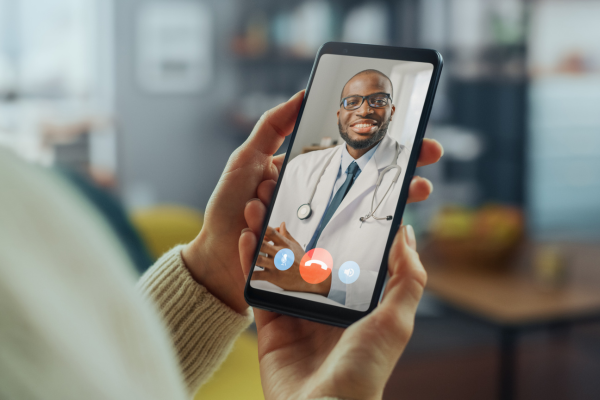Webside Manner: Improving Patient-Physician Communication in a Telehealth World
Bedside manner is one of the most important components of a successful physician-patient relationship. Many medical malpractice claims correlate with a patient’s satisfaction level with clinicians and medical staff, especially those alleging poor communication.
As healthcare continues to shift towards digital platforms, it becomes more challenging for physicians to maintain a positive “webside” manner with patients. Discover strategies for adjusting to telehealth communication, fostering strong physician-patient relationships, and enhancing patient satisfaction.

Adapting to A Digital World
Physicians with excellent communication skills are more likely to have patients trusting their medical judgment and treatment plan recommendations. A career in medicine is not just medicine — it also requires rapport and trust between the care team and the patient. Patient education and effective communication play a large role in establishing a positive doctor-patient relationship.
However, several major events have drastically changed the way providers and patients communicate in recent years:
- The COVID-19 pandemic forced many providers to engage in telehealth services like never before.
- The 21st Century Cures Act has called for immediate access for patients to their healthcare records by providers mainly delivered via healthcare portal systems.
- The health services industry has grown in its publicity status due to social media and consumer market giants entering the world of virtual healthcare services.
As a result, physicians now often communicate with patients via online portals.
Electronic Health Records (EHRs) have added a significant amount of data, and now a wide range of data is provided to a patient’s portal. Physicians and medical staff should communicate the information that will appear in the portal directly to patients during their visit. Likewise, a conversation with the patient about the immediate release of labs and tests prior to the physician’s review is vital to building patient rapport. Lay out a plan with the patient ahead of time for discussing any abnormal results. Make these conversations a part of your regular interactions with patients.
Considering Telehealth Communications
Even in a digital age, patients need to feel that their provider is listening and responding to their concerns appropriately. Here are some helpful considerations when adapting to telehealth and patient portal communications with patients:
Preparing for the digital encounter
- Ensure all equipment is working and you know how to use it.
- Ensure you have a private and secure setting that is clear of any distractions.
- Review the patient’s history before the visit.
- Look and act professionally, just as you would if seeing the patient in person.
During the visit
- Be sure the patient acknowledges that they can hear and see you.
Before you start the visit, ensure that HIPAA considerations are discussed. Remember this is not a private office setting. This is a visit to the patient’s real world. - Make sure the patient knows what to do if the connection suddenly cuts off.
Explain that you may be looking away from the camera to either take notes or review another screen, but that you are still fully focused on their healthcare concerns.
Improving Patient Satisfaction
Trust is a major factor in the physician-patient relationship. Establishing a trusting relationship may be more difficult through a telehealth visit. Communicating effectively, with compassion and empathy, is the key to developing a bond with patients.
Patients communicating through telehealth visits need to feel valued and confident that they are being understood. You can achieve positive patient satisfaction and better engagement of the patient by providing thorough education and encouragement.
When communicating via telehealth visits, many of the same rules apply as with in-person visits. For great tips on improving the personability of your telehealth program, review this article from The American Medical Association.
To earn CME or CEU on this topic, physicians and nurses can take Course 97633: Online Professionalism and Ethics in our NetCE online training portal.
Looking for more telehealth resources? Visit our telehealth toolkit.
About The Authors

Jamie Lamb
Director of Claims Operations, LHA Trust Funds
Jamie Lamb began her career in claims in 1997. Her experience includes handling multi-line claims in the areas of general liability, medical malpractice, automobile liability, commercial and personal property, excess and umbrella policies, and professional liability. Her experience comes as a former Manager and Litigation Specialist for the American National family of companies. She has been highly involved in the education and training of both internal and external customers her entire career. Ms. Lamb attended both Evangel University in Springfield, Missouri, and Loyola University in New Orleans.

Stacie Jenkins, RN, MSN, CPSO
Vice President of Patient Safety and Risk, LHA Trust Funds
Stacie Jenkins is a registered nurse with a master’s degree in nursing informatics. She has more than 20 years of experience in healthcare, working in patient care and quality/performance improvement positions. As the Vice President of Patient Safety & Risk at LHA Trust Funds, she works closely with hospital administrators, risk managers, and nursing staff to improve patient safety and establish best practices. She conducts on-site assessments and gives presentations designed to help clients address their patient safety risk management challenges.